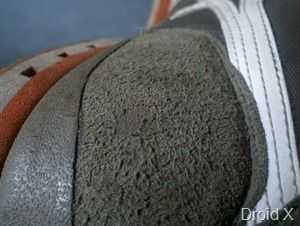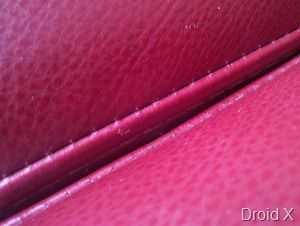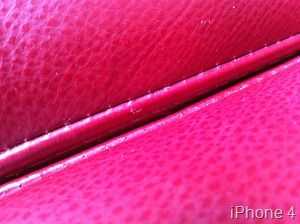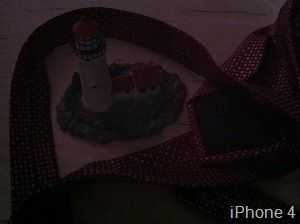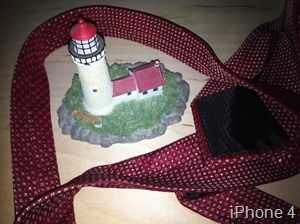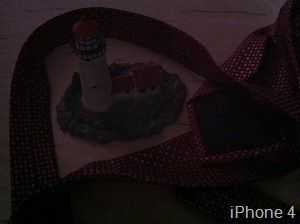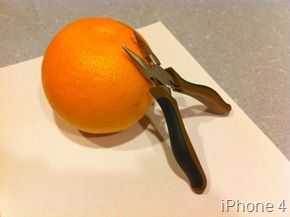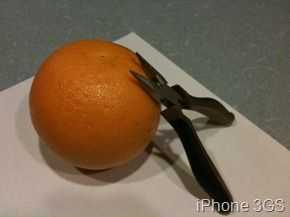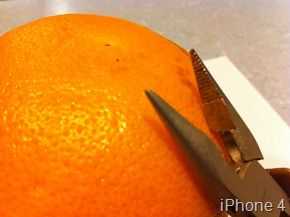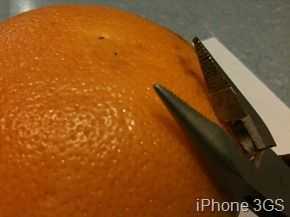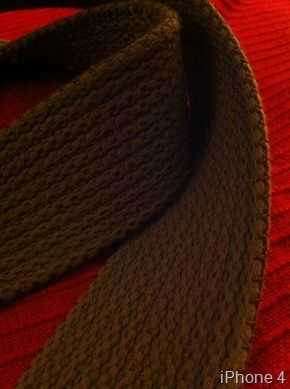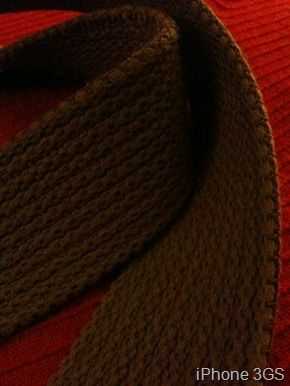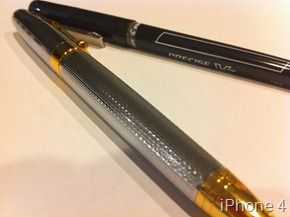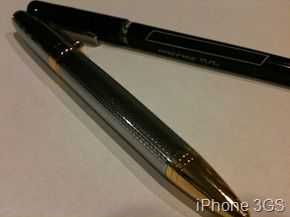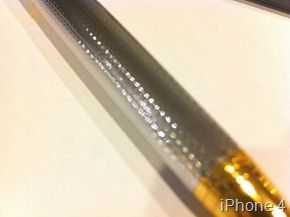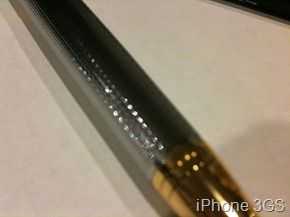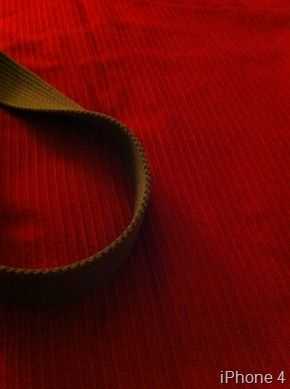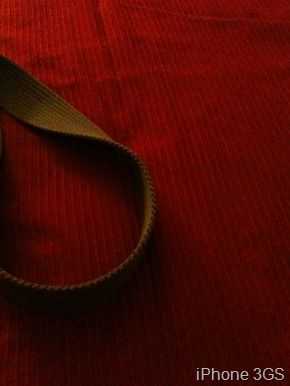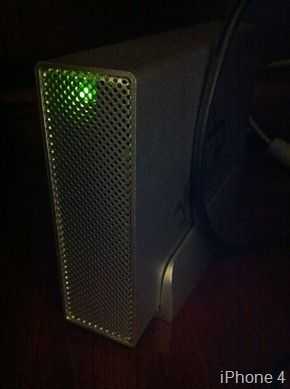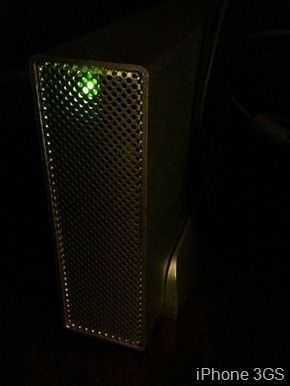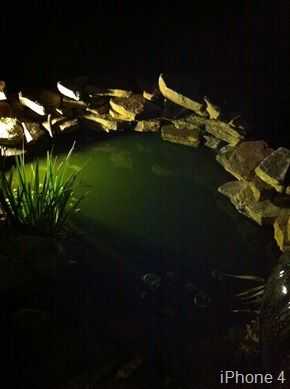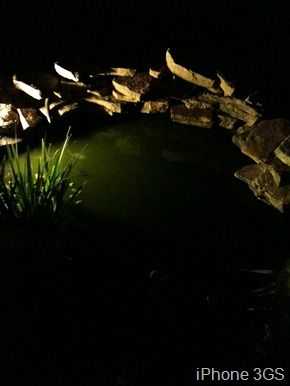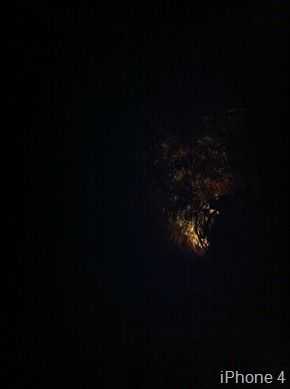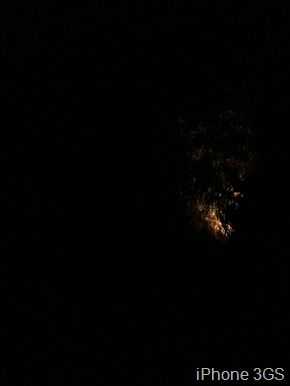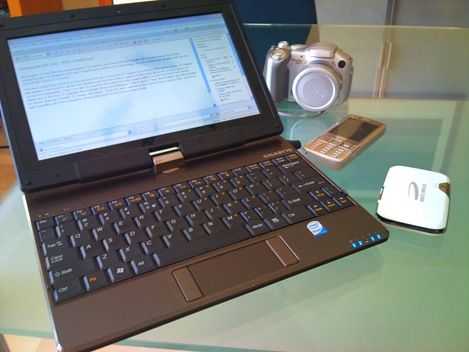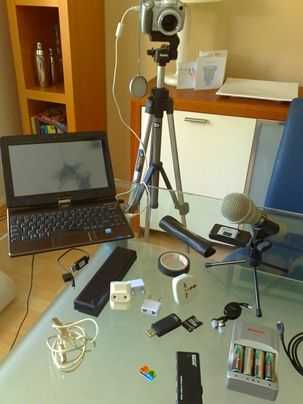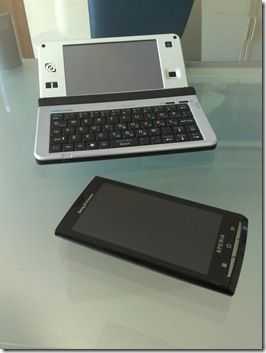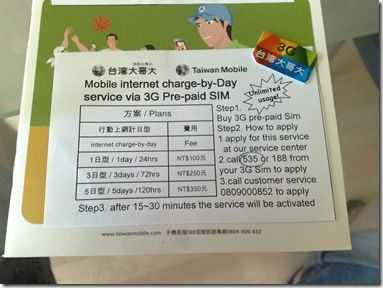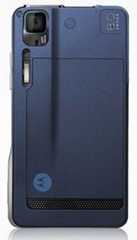 I’ve been away for the last two weeks. I took two smartphones and a netbook with me which is a slightly different setup to my usual phone/umpc/netbook combo. Fortunately I wasn’t caught-out on my outings where all I took were my smartphones but I was conscious of having to do any sort of site support with just a touchscreen phone! I took my X10i and my N82 as phone companions and the N82 was about the only device I used as a camera although I did find myself doing a few shots with the X10 just because it was easier to tweet / send to Facebook and that’s one of the features I really love using on Android. The sharing ‘bus’ that allows any application to link into the ‘share’ menu and get a message from an application is just killer.
I’ve been away for the last two weeks. I took two smartphones and a netbook with me which is a slightly different setup to my usual phone/umpc/netbook combo. Fortunately I wasn’t caught-out on my outings where all I took were my smartphones but I was conscious of having to do any sort of site support with just a touchscreen phone! I took my X10i and my N82 as phone companions and the N82 was about the only device I used as a camera although I did find myself doing a few shots with the X10 just because it was easier to tweet / send to Facebook and that’s one of the features I really love using on Android. The sharing ‘bus’ that allows any application to link into the ‘share’ menu and get a message from an application is just killer.
Tag Archive | "camera"

Holidays, Cameraphones, Navigation and Getting Closer to Replacing the N82
Posted on 04 August 2010
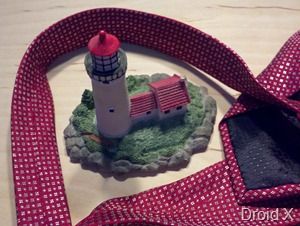
Droid X vs. iPhone 4 Camera Test (video and stills)
Posted on 22 July 2010
While the Droid X [portal page] beats the iPhone 4 [portal page] in a straight-up megapixel to megapixel comparison by 3 megapixels (Droid X’s cam is 8 MP while iPhone 4’s is 5 MP), the iPhone 4 uses a fancy back-illuminated sensor, which enhances it’s ability to capture light, according to Apple.
The Droid X supports 720p HD recording, just as the iPhone 4, and interestingly, the Droid X has a mechanical shutter. The Droid X also has a dedicated two-stage camera button which focuses and captures, as well as a dual-LED flash. The iPhone has a single LED flash. Additionally, the Droid X can upload HD video directly to YouTube, whereas the iPhone 4 has to have the video put onto a computer and uploaded to YouTube for HD quality (Apple plans on updating this at a later time, so it’s a software restriction, not hardware).
Below I’ve taken some shots with both the Droid X and the iPhone 4 for comparison. The videos were both taken from the respective devices and uploaded to YouTube through a computer, just to ensure that no compression was taking place during the phone upload process.
Because this is a camera comparison post, I’ve bumped up the click-through pictures to a larger than usual resolution, so be sure to click on them for a more detailed view.
General
Macro
High Light
Medium Light
Low Light
Low Light (with flash)
Video
If you have a powerful computer and you’d like to watch these videos side-by-side, give this link a try. Slower computers will likely stutter if you try to run both in HD at the same time.
The iPhone has somewhat of an unfair advantage as it has auto-exposure adjustment, while the Droid X requires manual adjustment in the settings menu of the camera app. All pictures taken with the Droid were at an exposure of 0 (it ranges between -3 and +3) but just for comparison’s sake, here is the Low Light Droid X shot with the exposure turned up to +3 along side the same iPhone 4 Low Light shot that you saw above.
It’s hard to say which of the two has a better dynamic range, but the iPhone 4 seems to have more vibrant colors (not necessarily more accurate, however). The iPhone 4’s HD video also looks noticeably better than the Droid X’s in terms of sharpness and framerate, though the Droid X doesn’t seem to focus its camera before shooting HD video which is somewhat odd.
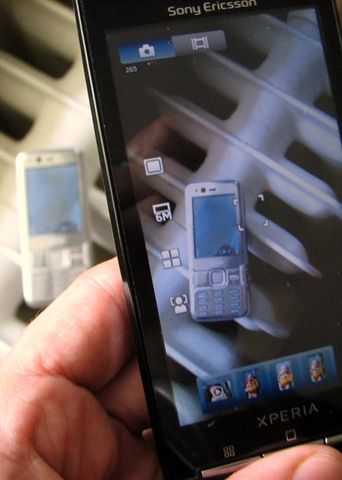
Super Phone Cameras – My Choices and Tips
Posted on 28 June 2010
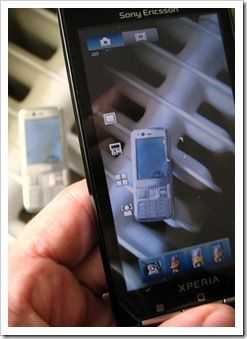 Sony, Samsung and Nokia have been leading the market for high quality cameraphones for years now and if you’ve been following my N82 story, you’ll know that even after 2.5 years I’m still finding it hard to find a replacement for the amazing optics, sensor, flash and mechanics of the N82 camera.
Sony, Samsung and Nokia have been leading the market for high quality cameraphones for years now and if you’ve been following my N82 story, you’ll know that even after 2.5 years I’m still finding it hard to find a replacement for the amazing optics, sensor, flash and mechanics of the N82 camera.
It’s not just about mega-pixels. It’s never about the megapixels. 12MP might bring you some digital zoom le-way and a better large-format print but that’s about it. I wrote a semi-private article about assessing smartphone cameras [reproduced below] a few months ago and you’ll see how complex the situation can become if you’re really looking to replace that compact camera; And many people are.
It’s not just about image quality either. It’s about ease-of use, sharing, longevity, geotagging, communities and having a camera and video cam with you at every opportunity. I have literally thousands of pictures that I’ve taken with the N82 that I would never have had the chance to take with a compact camera. There are thousands of people out there that have used smartphone cameras in difficult situations too. Car accidents, citizen journalism, wars and then there’s the possibility to go live to thousands of people with applications like Qik and Ustream. Compact cameras generally have better quality optics and the very important mechanical zoom but there are still good reasons to have a cameraphone.
The new player on the block is the Apple iPhone 4 and I have to confess that I’m interested. It comes at a time when I’m deep in the middle of looking for a new cameraphone solution before my N82 dies. I’ve done some analysis on the iPhone4 pictures and although I can’t comment on the new software yet, I can comment on the sensor. It doesn’t seem to be a huge leap forward in quality. In sensitivity terms it appears to have a 1-stop advantage over the 3GS and of course, with the high resolution, is likely to product better prints but that’s not significant for most people. In fact, it’s rather disappointing given the hype that came from Apple on the backlit sensor. [Update: I estimate that the iPhone 4 is only giving users 1 f-stop advantage. That’s double the sensitivity but not a huge difference in the real world] We’re talking ‘good’ and ‘top quartile’ here but not top 5. I’ve seen better results from the N82, N86, Satio, N8, XT720, Omnia Pro, N900 and I suspect there are a few other Samsung and Sony phones out there that will beat it. For me, the iPhone 4 brings software rather than quality and that’s a valid reason to choose it if the image quality is acceptable to you. Ignore this report though. It compares the iPhone 4 to some superphones for sure but if you’re interested in quality cameraphones, that’s not the list you need to be looking at.
The Samsung Omnia Pro had an excellent camera but fell short in a few important areas. Windows 6.5 is not exactly the best OS for photographers, it only comes with LED flash and, as with many smartphones, the open lens proved a grease-magnet and long-term quality issue. The Xperia X10 is a similar story too. Then there’s the Sony Ericsson Satio which had a good camera and flash but turned out to be a terrible phone. Currently it looks like the Nokia N8 is going to set new standards but for me, that Symbian operating system isn’t something I’m getting too excited about now that I’ve had some good time with Android. Again, the lens is open on that N8.
Given that I’ve settled on Android as the best mobile OS for me (I’m a Google user, I’d be stupid to choose anything else!) there’s one phone coming up that might take the title for me. I don’t expect it to have the quality of the Nokia N8, a phone likely to raise the bar significantly, but it looks to be a nice all-round solution. You can check out some Flickr galleries taken by Asian owners of the XT720. I’m a little worried about what could be a plastic lens (this image looks either smudged with finger grease or the result of a plastic lens) but as far as Android phones go, it looks to be good enough that it could replace the N82 although I have promised myself that I will test the N8 too.
Here’s my list of things to think about when choosing a cameraphone:
- General image quality (lens quality and sensor quality more important than megapixels)
- Low-light photography (without flash) A sensitive sensor means not having to use flash. A natural lighting wash is often better than a pinpoint flash. It also means that the camera can choose higher shutter speeds and therefore produce sharper images.
- Flash. For very low light images, flash is required. Xenon flash make a great choice not just for its power but for it’s short duration that can ‘freeze’ images. A long duration LED flash can result in blurry images if the subject is moving. LED lamps are the only choice for low-light video work.
- Preview screen (both indoor and outdoor) I make a lot of mistakes on my N82 purely because I can’t see what is in focus and what isn’t. A big, high-brightness screen is a superb way to secure a better ‘hit’ rate.
- Access to controls. Touchscreen devices can make accessing camera options easy. Check out how many presses you need to make to turn the flash from ‘auto’ to ‘red eye.’ for example.
- Type of controls. If you want to get creative you’ll need access to focus controls, ISO, aperture, shutter speed and white balance but there are some other features that are good. How about automatically taking 6 shots at a time? Or being able to detect movement. Some of these features are gimmicks, some are useful.
- Pre-focus. Make sure that the camera is able to pre-focus by pushing the shutter release button down half-way. If you’re able to prepare for a shot like this, the duration between pressing the shutter release button and the camera taking the image can drop dramatically. A near instantaneous press/capture is obviously ideal.
- Touch capture. With touch-capture, you can tap on an area of the (touch) screen to influence the focal point. It can also be less ‘shaky’ than using a mechanical shutter release button. Be aware that touch-capture will not give you the ability to preview the focus.
- Speed to remove device from pocket and start camera. THere’s nothing worse than waiting for a device to come out of standby and waiting for the camera application to start. Having a shutter cover rather than a case saves time. Having a quick unlock feature saves time. Fast software saves time.
- Quick review. Being able to see the photo you’ve taken is critical. Often the shutter sound does not correspond exactly to the time the image was taken. If the preview takes 2 or 3 seconds to appear it’s annoying for both you and your subject.
- Transfer of photos (online, usb bluetooth, tv) Think about where you need to send your photos. Do you use Flickr. If so, think about a phone that uses 3G with a fast upload speed (HSUPA or HSPA for example.) Make sure the transfer process can be run in the background. Also think about USB transfer speed. For Facebook, make sure you can install an application that supports image uploading or that the Facebook website allows you to upload from the phone.
- Lens cover. The value of a lens cover can not be overstated. A greasy, scratched, dusty lens is the last thing you want.
- Geotagging. Geotagging isnt just for fun, it helps you to organise your photos based on places. A fast GPS lock or use of network location services can help.
- Overall size of device. If it’s too big you might have to put it in your bag.
- Price. Clearly price is a major consideration.
- Apps. Think about third party software. The iPhone has a number of good camera applications that can be used for different scenarios. On-cam video editing is becoming a theme too as processing power increases.
- Future. Phones can often get better over time. Firmware gets improved and a phone that may have been slow on first release might get upgraded. A phone older than 18 months is not likely to get regular firmware updates.
- Build quality. A cameraphone WILL take a beating. Think about moving parts and exposed ports.
Choosing a mobile phone based on camera capabilities is not how most people will go about the process of choosing their next mobile phone but I know that there are many of you out there that put the camera capabilities high on the list. I hope the tips help you and if you’ve got any other Super CameraPhone tips or thoughts (how’s that Evo, DroidX doing?) please let me know in the comments section below.
If you are interested in cameraphones, check out these two bloggers. They’re as mad about mobile phone camera’s as I am!
Steve Litchfield – All About Symbian, Twitter
Tnkgrl – Tnkgrl Mobile, Twitter

iPhone 4 vs. iPhone 3GS Camera Test, Video and Photos
Posted on 25 June 2010
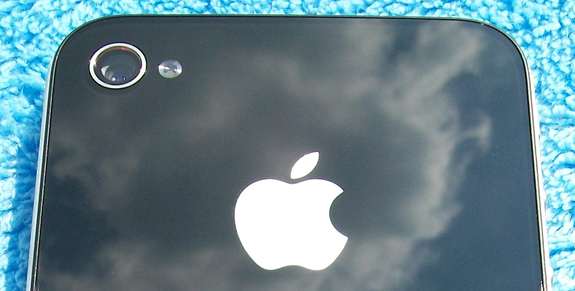 In the keynote that announced the iPhone 4 [Portal page], Steve Jobs told the world that the iPhone 4 features a 5MP camera. A decent bump from the previous iPhone 3GS’s 3.2MP camera, but still a far cry from some of the latest phones out there which are rocking 8MP cameras (see: HTC Incredible). Jobs was quick to also say that the iPhone 4 uses something called a back-illuminated sensor which is designed to capture more light than traditional smartphone sensors, to enhance low light performance. The iPhone 4 is also capable of recording HD video at 720p (1280×720) at 30 FPS, according to Apple.
In the keynote that announced the iPhone 4 [Portal page], Steve Jobs told the world that the iPhone 4 features a 5MP camera. A decent bump from the previous iPhone 3GS’s 3.2MP camera, but still a far cry from some of the latest phones out there which are rocking 8MP cameras (see: HTC Incredible). Jobs was quick to also say that the iPhone 4 uses something called a back-illuminated sensor which is designed to capture more light than traditional smartphone sensors, to enhance low light performance. The iPhone 4 is also capable of recording HD video at 720p (1280×720) at 30 FPS, according to Apple.
Here I’ve got some comparison photos and videos from the iPhone 4 and iPhone 3GS cameras:
Video Recording
At the end of the video there is a link to the same video taken with the iPhone 3GS. Make sure you are watching in HD.
Real HD video and flash (YouTube) HD video are a bit different. The raw file is certainly of a better quality than what YouTube is showing, but you should still be able to get the gist of it.
Photos
I’ve taken a variety of shots with the iPhone 4 and iPhone 3GS. Be sure to click on photos to enlarge them for full detail. The iPhone 4’s flash is turned off in all photos. The iPhone 4 takes photos at a resolution of 2592×1936 while the iPhone 3GS takes them at 2048×1536.
General Use
Close Ups
Extreme Close Ups
Low Light
Extreme Low Light
For one, it looks like the iPhone 4 has better contrast than the 3GS. This is particularly apparent in shots of the pen, where there is a more broad range of blacks and whites in the iPhone 4 shot; on the corresponding 3GS shot, you’ll notice that the darkest black on the photo appears to cover more area instead of fading through a series of shades as the light and colors change.
Probably the best picture to see the difference in resolution is of the belt in the Close Ups section. This was semi-dark shot and the iPhone 3GS’s photo suffered because of it.
Special back-illuminated sensors are great, but just how much better is the low light performance on the iPhone 4? I might be able to dig up a technical answer, but let’s look at what it means in real world terms. Take a look at the first two photos in the Extreme Low Light section. On the iPhone 4 shot, you can see the lilies toward the bottom of the pond a bit better than the 3GS shot. Additionally, the pond’s surface is not as noisy in the iPhone 4 shot as it is in the 3GS’s, due to the enhanced low light performance.
Is this really a significant improvement? I would put my money on the fact that the majority of iPhone 4 users will not notice the difference between the iPhone 4 and iPhone 3GS cameras when it comes to photographs. Most user’s photos will either stay on the device, or be uploaded or sent somewhere at reduced quality. But for those who really use their camera, I think they’ll be quite please with the iPhone 4’s camera. On the other hand, the HD video recording capability on the iPhone 4 is a pretty clear improvement. The flash is also something to consider, though because the iPhone 3GS doesn’t have one, we didn’t use it in these shots (if you are interested in flash info, you’ll find it in our upcoming full iPhone 4 review).

Mobile Reporting Kit V8 – Oldies but Goodies for Computex
Posted on 24 May 2010
Once again, it looks like my trusty Gigabyte Touchnote, my Canon S2IS and my N82 will form the hub of my mobile computing gear at Computex this year. Despite great advances in technology, I’m the mobile-tech-blogger with the old kit and the reason is process.
See previous editions of my mobile reporting kit here.
I’ve been using these devices successfully as one process unit for so long that if I replace any of them I’ll break a delicate chain. If I change the camera I can’t hook it up to the the netbook and use the remote capture facility that allows me to drag images on-screen into Livewriter in live-blogging situations. I also won’t be able to record in the simple but high-quality MJPEG format that works with Movie Maker out of the box and allows me to edit without issues on my netbook. If I upgrade the netbook I’ll be using Windows 7 which doesn’t have Movie Maker and will probably be slower than my XP build. FInding a netbook with touch, a fast SSD and good 3G isn’t easy or cheap either. If I change the phone, I’ll be left with something that doesn’t have a Xenon flash, good low-light capability and free navigation without the need for an internet connection. As for the MiFi, well, it’s the MiFi and it’s worth taking everywhere!
Of course, there’s a lot of other bits and pieces that go in the kit bag. Tripod, cables, chargers, USB Mic, toolkit, spare battery etc etc etc. Necessary evils!
I am also thinking about two other bits of kit. The UMID BZ, a device I’ve been getting great use out of in the last 4 months. That could serve as a backup PC, pocket PC and bedside PC. I can get away without it though. The other device, and one I’m more likely to take is the Xperia X10. That will serve as a MID, backup camera, phone and comms device and I might use it for quick videos that are in the correct format to be able to instantly send to YouTube. It might become my primary phone too because I really only need the N82 for quick images and navigation.
For 3G, I’ll be using the same service as last year. I picked up a local Taiwan Mobile 3G SIM at the airport. It was cheap and worked well. I doubt it’s still active so i’ll probably have to sign up again.
It’s a relatively old set of kit now and at some point in the next year I’ll be looking to upgrade. Battery life on my netbook needs to be improved (I only get about 8 hours total from the two batteries I have) and low-light capability on my main camera needs improving too. As for the mobile phone, I have a feeling that I’ll forever be carrying two devices. One MID-focused, the other a backup device.
If you’re going to Computex, i’d love to hear and write about your kit list. Let me know below (or in a blog post) and I’ll round up the information in a post here on UMPCPortal.
 |
| |||
 |
| |||
 |
| |||
 |
| |||
 |
| |||
 |
| |||
 |
| |||
 |
| |||
 |
| |||
 |
|



